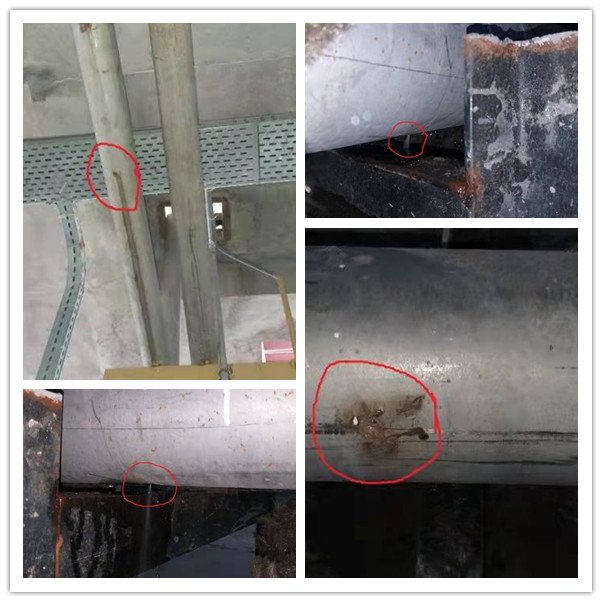The pore corrosion of stainless steel 304L steel pipe is a common corrosion form of metal corrosion. What is the reason for this corrosion? How can this be avoided? Next, according to our actual case, we will analyze it for you.
We provided a batch of stainless steel 304L steel pipes for our customers in the plant reconstruction project of baking soda production plant. After the customer received the goods and the installation was completed, there was no problem. However, after the operation of the whole pipeline system for 5 months, the pipeline appeared porous corrosion, and the fluid of the pipeline continued to seep out.

Cause analysis of hole mounted corrosion of stainless steel 304L steel pipe
After communicating with customers for the first time, we first thought about whether there was a problem with the pipeline itself. Therefore, we intercepted samples from the existing pipeline and sent them to the laboratory for experiments. The experimental results show that the chemical composition, physical properties and intergranular corrosion of the product fully meet the requirements of the standard.
After eliminating the problems of the pipeline itself, we convened the technical team of our company, the personnel of the third-party laboratory and the technical personnel of the customer. After several meetings and discussions, the project personnel found that this kind of porous corrosion was caused by the non-standard construction and material selection of the on-site personnel
- We analyze the shape and distribution of steel pipe defects, and the defects of steel pipe are hole shaped. The distribution is concentrated in the middle and lower part. If there is a problem with the raw material of the steel pipe, because the manufacturing process of the steel pipe is cold drawing or cold rolling. In the manufacturing process, it will be prolonged and stretched to form linear defects. Not porous defects. Therefore, it is ruled out that the raw material of steel pipe itself has pore corrosion
- According to the analysis of the medium passing through the steel pipe, chloride ion will corrode stainless steel. The normal value cannot exceed 25ppm, but the chloride ion content in the customer’s pipeline exceeds 25ppm. The customer should choose 316L pipeline instead of 304L pipeline
- After the product is installed and pressurized, the medium in the pipeline is not dechlorinated, resulting in the incomplete discharge of the fluid in the pipeline after the pressurization, and part of the liquid remains in the pipeline, resulting in the corrosion of the outlet hole of the pipeline under the action of time. This is why the porous corrosion points are concentrated below.
- After the completion of construction, the customer did not carry out pickling, but simply washed with water, which reduced the corrosion resistance of the protective film on the pipeline surface
Finally, after clarifying the problem, considering that the pressure of the customer’s pipeline is very small, we are provided the customer with 316L welded pipeline. Now the whole pipeline system has been running for 2 years without any problems. Therefore, for customers, we should pay attention to product material selection and strict construction specifications.







